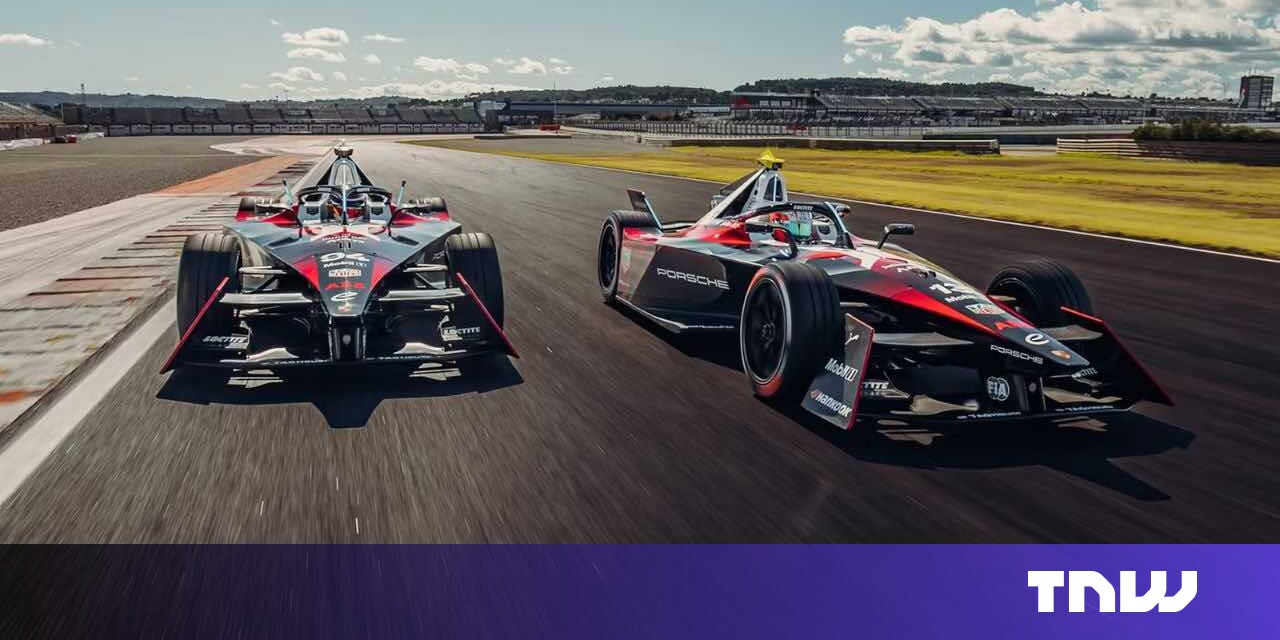#Formula E world champion reveals how race cars accelerate EV tech

Table of Contents
The location of his latest ride is the carmaking hub of Stuttgart, Germany, the home of Porsche and Mercedes-Benz. But you’ll never see these wheels spinning away — because they’re permanently parked.
A stationary cockpit encased by screens, the device replicates driving da Costa’s Porsche race car. That provides crucial testing for the real thing.
“Once we got to the racetrack in Sao Paulo, the start setup and settings had already been defined here in the simulator,” da Costa tells TNW. “That’s how close we believe that simulator is to the real car.”
It’s one of many technologies transforming Formula E — the electric cousin of the petrol-powered Formula 1. At TNW Conference on June 14, da Costa will share the secrets of the sport’s digital transformation. Ahead of the talk, he gave us a glimpse into the progress.
Da Casta has steered this headway from the start. In 2013, the young Portuguese was on a path to debut in Formula 1, until his team made a controversial decision to employ another driver. But when that car door closed, another one opened.
Formula E was about to launch the first-ever sport with a net-zero certification. And one of the teams wanted to make da Costa their star driver.
The rise of Formula E
Back then, the cars were dubious attractions. Two of them were needed to complete a single race. They also offered just a fraction of the power provided in Formula 1.
“I thought I was going to be racing with 1,000 horsepower,” da Costa recollects. “Then I find myself racing something with less than 200 horsepower — and we need to swap cars in the middle of the race to complete the race because the batteries don’t have enough range.”
Despite the teething problems, da Costa recognised the potential. Electric vehicles (EVs) were moving into the mainstream and Formula E had a chance to accelerate their progress.
“I need to keep thinking about the car’s brain.
Da Costa rolled the dice and was soon cashing in. The 32-year-old went on to win a world championship in 2020 and drive in every season of the sport. That’s given him unique experiences with the tech transforming EVs.
Under the hood
Today’s Formula E teams use only one car, which has four times the power of the original racers. In a period of slowing development in Formula 1, the progress of electric racing has only accelerated.
The constant search for extra speed often leads to software. Drivers regularly get digital upgrades to every aspect of their cars, from the gears and radio to the power and torque.
With potential gains at every turn, the team welcomes experimentation. When new ideas emerge, they’re quickly tested in the simulator.
“Even the crazier ideas can end up in the racecar the day after,” da Costa says.


One big chance to speed up comes from slowing down. On each track, the software can define each corner individually and coordinate the front and rear brakes accordingly.
But none of the settings are in stone. If the track heats up, the tyres degrade, or rain falls on the asphalt, the software adapts the car’s balance to the evolving conditions.
“Even when I’m inside the car racing at 300 kilometres per hour with other drivers, I need to keep thinking about the software and how can I use the car’s brain to help me go faster on the lap as I’m racing,” da Costa says.
From Formula E to the road
Formula E isn’t only about winning races. Car makers also use the tracks to develop tech for the roads. French marque DS Automobiles compared the sport to an “open-air laboratory.”
This unique testbed has also attracted the likes of BMW, Mercedes, Porsche, and Nissan.
“Brands from all four corners of the world have been racing Formula E,” da Costa says. “And when you compete, you’re forced to evolve at a much steeper learning curve.”
Those evolutions frequently emerge in commercial EVs. Jaguar, for instance, adapted racecar efficiency software to increase the range of its I-Pace SUV by 10%. Nissan, meanwhile, used on-track analysis to triple the battery capacity of the all-electric Leaf.
“It’s the most efficient car in the world.
The latest Formula E cars promise new levels of efficiency. Over 40% of the energy they use during a race comes from regenerative braking.
“So every time we brake we’re putting energy back into the car,” says da Costa.
The new models also add a rapid charging capacity of 600kW — almost double the power of the world’s most advanced commercial chargers in the world. It’s also the fastest Formula E car yet, with the most sustainable batteries. All these upgrades could filter through to consumer EVs.
Accelerating the electric transition
On the track, EVs are delivering real excitement. With four winners in the first four races of this season, the series is proving more competitive than Formula 1. It’s also delivering more action: last year’s Monaco e-Prix had 116 overtakes, while the Monaco GP had only 22.
Still, they can’t catch Formula 1 cars for speed. But they’re miles ahead by one measure.
“Our race car is the most efficient car in the world,” da Costa says. He adds that his passion for Formula 1 remains undimmed, but he’s optimistic about the electric momentum.
“I believe someone born today will never know what a petrol engine is like to drive,” he says. “So this transition will happen in a very natural way.”
One of the themes of this year’s TNW Conference is Sustainable Futures. If you want to dive into the ethics, diversity, sustainability, and social impacts of tech — or simply experience the event (and say hi to our editorial team) — we’ve got something special for our loyal readers. Use the code TNWXMEDIA at checkout to get 30% off your business pass, investor pass or startup packages (Bootstrap & Scaleup).
If you liked the article, do not forget to share it with your friends. Follow us on Google News too, click on the star and choose us from your favorites.
If you want to read more like this article, you can visit our Technology category.





